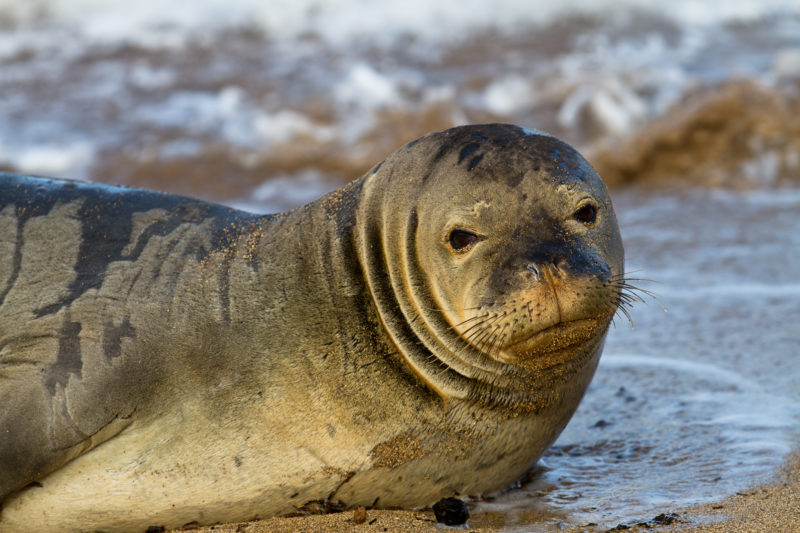This post may contain affiliate links, which means I'll earn a small commission if you purchase something through these links. You won't pay any extra; instead, you'll be helping Aloha With Love to thrive. Thank you! Learn more.
--
While Hawaiian monk seals can be cute and a fantastic photo opportunity, be aware that there are federal laws, Hawaii state laws, local taboos and consequences if you get too close. They are protected for good reason.
On a personal note, I ask all my readers to respect Hawaii’s creatures without disturbing them. Take your selfies from a distance and educate other visitors who may not know the rules.
What a joy it would be if these beautiful creatures were even more plentiful when the next generation visits Hawaii!
Aloha with love,
Amy
About The Hawaiian Monk Seal
How rare are Hawaiian Monk Seals?
Hawaiian monk seals are native to the Hawaiian islands and it’s estimated that only 1,400 of them are left in the world: 1,100 in the northwestern Hawaiian islands and 300 in the main Hawaiian islands. That’s not very many! If you’re lucky enough to see one, let it sink in that you’ve spotted one of the 1,400 – it’s miraculous!
So what’s killing the Hawaiian Monk Seals?
Life as a Hawaiian Monk Seal is not easy. Food scarcity, diseases they have no immunity to, predator attacks and habitat loss are just a few of the dangers that they face.
One big cause of death among Hawaiian Monk Seals in Hawaii is all that trash in the ocean. Hawaiian Monk Seals have one of the highest documented entanglement rates among pinnipeds (carnivorous aquatic mammals). And it’s the pups and juveniles that are suffering the consequences.
How you can help: Can you reduce the plastic in your life to zero? Imagine if whole countries stopped throwing away plastic bottles and plastic shopping bags all at once. What a difference we could make – so many creatures would literally be able to breathe again.
The Rules And Laws About Hawaiian Monk Seals
Hawaiian monk seals are endangered, which means there are a lot of rules when you encounter one whether it’s on the sand or in the water. Hawaiian Monk Seals are protected under the:
- Endangered Species Act (federal)
- Marine Mammal Protection Act (federal)
- Hawaii State Law (state)
This means it’s illegal to harass, feed, hunt, capture or kill – harass and feed being the key words for Hawaii travelers.
Local Tip: For most locals, interacting with a Hawaiian monk seal is taboo. Don’t be surprised if you get rude stares or even a verbal warning for getting too close for your selfie. You might find yourself making headlines on the evening news (and not in a good way).
What are the consequences for interacting with Hawaiian Monk Seals?
The National Oceanic and Atmospheric Administration (NOAA) fined an Alabama man $1,500 for touching a Hawaiian Monk Seal and harassing a sea turtle.
You can also get attacked. Hawaiian Monk Seals aren’t slow turtles. They are carnivorous, large mammals with sharp teeth and will attack when provoked (even on sand). Keep your distance.
How far should you stay away from Hawaiian Monk Seals?
The NOAA recommends a distance of 50 feet when viewing Hawaiian Monk Seals. Unfortunately, when you’re standing on a beach with a Hawaiian Monk Seal, 50 feet seems too far away and most people start inching closer as the crowd gets bigger.
Be a responsible Aloha Travel Ambassador and don’t be afraid to tell people to back up. Draw a line in the sand. Use your slipper as a boundary. Do whatever you have to do to spread awareness.
Local Tip: I start at about 50 feet and sit down in the sand while facing the Hawaiian Monk Seal directly. That way it looks like I’m there specifically to see the Hawaiian Monk Seal. Anyone coming behind me and I’ll strike up a conversation and mention the 50-feet rule. Anyone coming from the opposite side and I point to the Hawaiian Monk Seal and make an “X” with my forearms when they’re about 50 feet away.

